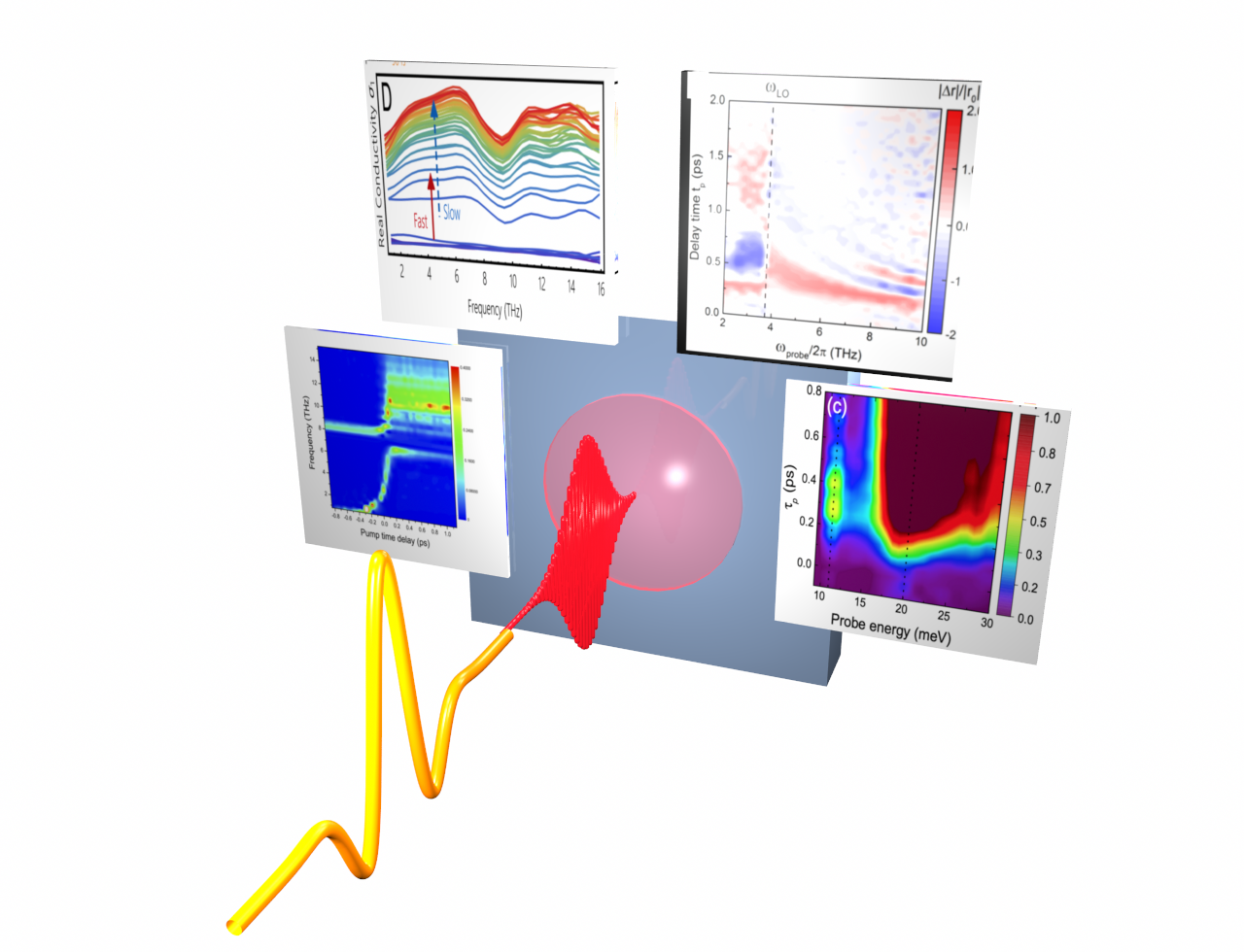
CURRENT RESEARCH THEMES
Use ultrafast multi-THz spectroscopy to observe photo-induced phase changes in matter.
Develop new THz tools to coherently manipulate charge, spin and lattice degrees of freedom.
Develop new methods for time-resolved electron microscopy
Single and collective quasiparticle dynamics with sub-meV, sub-40 fs resolution.

Time-resolved THz spectroscopy experiments allow one to measure low energy excitations in materials on sub-picosecond time scales following optical perturbation. Depending on the material, one can probe the conductivity of mobile carriers, orbital transitions of excitons, infrared active phonons, and energy gaps that arise from many-body correlations (e.g. superconductivity). Our lab has several time-resolved systems: an all air-plasma THz spectrometer with sub-50 fs, sub-meV resolution, a high-field THz spectrometer for strongly perturbing charge and spin degrees of freedom coherently, and a novel THz pump - fs polarimetry setup designed to sense ultrafast asymmetry arising from charge/spin - lattice couping.
THz-driven point projection electron microscopy

When an intense, single-cycle THz pulse illuminates a metal nanotip, a lighting rod effect can locally enhance the electric field at the tip apex by several 1000 times. For incident peak THz fields of 100 MV/m, the local field can reach 100 GV/m. At this field, the potential barrier for electron emission is tilted so much that the electron can tunnel directly through to free space. Once free, electrons are accelerated to multiple keV in energy over length scales comparable to the tip radius, only 10’s of nm typically. These femtosecond duration electron bursts can serve as ultrabright sources for electron microscopy. We are currently developing a new form of ultrafast point projection microscopy using this THz-driven electron emission.